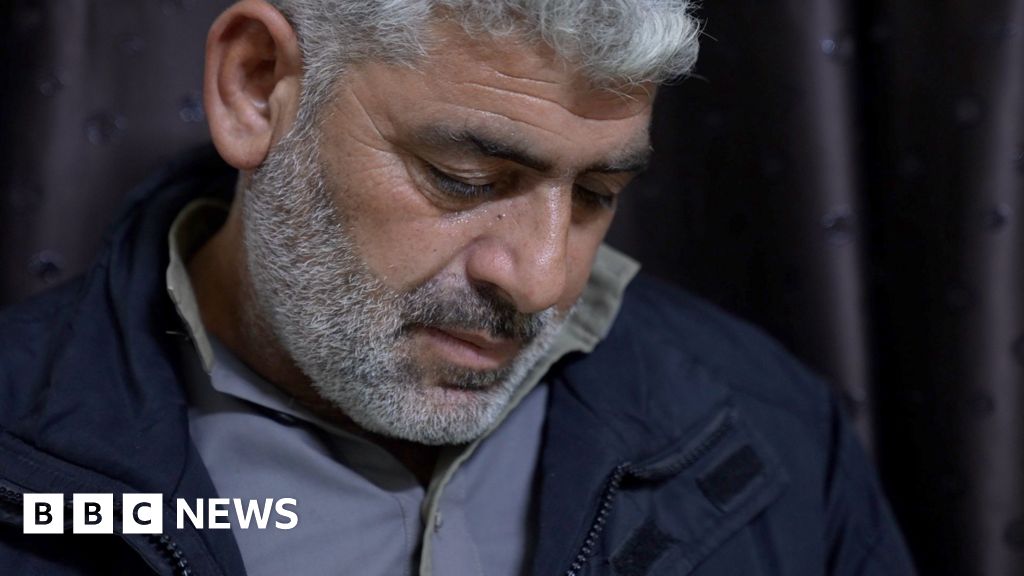ARTICLE AD BOX

The taskforce the USS Bataan is part of can monitor a wide area of sea
By Nafiseh Kohnavard, Middle East correspondent
BBC Persian, in the eastern Mediterranean
Under cover of darkness, a single fighter jet roars as it rips across the deck of the USS Bataan, a vast US assault ship. Moments later, a second jet follows.
The flashing red and green lights on the tips of their wings soon disappear somewhere over the eastern Mediterranean.
Home to 24,000 US Marines and sailors, this gigantic floating military base filled with armoured vehicles, jets and helicopters usually deploys at speed to transport troops on to land.
But when Yemen's Houthis began firing missiles and flying drones into commercial ships in the Red Sea, the crew of the USS Bataan found themselves having to adapt to air combat, sending jets out to try and shoot them down.
"I never imagined I was going to be doing this when we launched," says lead pilot Captain Earl Ehrhart.
Capt Earl Ehrhart standing in front of one of the USS Bataan's Harrier jets
In fact, just days before the outbreak of war in Gaza, Captain Ehrhart and his crewmates thought they were going home.
After months patrolling the waters close to the Persian Gulf, the tens of thousands of troops on board the USS Bataan were about to finish their tour of duty. But on the morning of 7 October, everything changed.
Within an hour of Hamas attacking Israel and killing around 1,200 people, the USS Bataan received new orders, to plot a course towards the eastern Mediterranean and prepare to monitor the coast of Gaza.
Twelve days later, another change in the mission. This time, to engage the Houthis.
In response to the escalating violence in Gaza, since mid-December the Yemeni Houthis have attacked more than two dozen shipping vessels. They claim all were either Israeli-owned or operated. However, many appear to have no connection with Israel at all.
In January, the US and UK also began carrying out air strikes in retaliation, including from the USS Bataan.
The USS Bataan carries dozens of planes and helicopters
"The Houthis were launching a lot of suicide attack drones," says Ehrhart. "They are a robust and capable force," he adds, warning they are not to be underestimated.
To be effective against this rebel group, the marines needed to adapt.
"We took a Harrier jet and modified it for air defence," Ehrhart tells me. "We loaded it up with missiles and that way were able to respond to their drone attacks."
An experienced fighter pilot, Ehrhart says he has shot down seven Houthi drones. But when flying so close to these explosive devices, he says, every interception carries great risk.
"They are shooting at us all the time, so we need to be even more focused. Our systems need to be primed so we can stay safe."
The control room
A short helicopter ride away from the USS Baatan sits the Arleigh Burke, a second US warship sitting on high alert.
Below deck, aglow with the light of a dozen computer monitors, is the Combat Information Centre.
"Here is where we fight from," says Lieutenant Commander Tyrchra Bowman. "This is the heart of our ship."
Equipped with an elite radar system, the crew of the Arleigh Burke are the eyes and ears for all the US warships in the area. They send out alerts for any perceived threat from the land or sea.
Some of those alerts go to Captain Ehrhart aboard the USS Bataan, and indicate just how long he has to react to an incoming Houthi drone.
"It's essentially math. The command room will say: 'The Houthis have launched a one-way attack drone. We have this amount of time.' Then we can step down from a two-hour response time, all the way down to a five minute response."
The ship can rapidly land marines ashore or help to evacuate civilians
None of the troops on board the USS Bataan know when they will go home. With tensions rising across the region, the USS Bataan's mission has now been extended until further notice.
In response to a drone attack by Iraqi Shia militants on a US base in Jordon last month, US forces are continuing to carry out retaliatory strikes inside Iraq and Syria. These attacks are against those who President Biden calls "radical Iran-backed militant groups".
Together with the Houthis, all these groups are part of an "axis of resistance" - an umbrella term for those allied with Iran and claiming that their attacks are "the direct results of the Gaza war".
A Shia Iraqi militia recently called on its allies in the axis of resistance to attack Israeli ports.
Such a threat will directly challenge the mission of the USS Bataan.
"We are now living in a complex and uncertain operating environment," says Colonel Dennis Sampson, the ship's commanding officer. "There are numerous actors at play and that's only increasing."

 11 months ago
107
11 months ago
107








 English (US) ·
English (US) ·